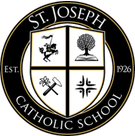Week at a Glance
ELA
- To associate y with long e and long i
- To associate ay with long a
- To decode words with y
- To recognize and spell Memory Words: down, first, too, work, many
- To encode adjectives ending with y
- To encode Memory Words to complete sentences
- To understand the homophones: to, two, too
- To understand and use -y as an ending for adjectives
- To develop fluent reading with repeated readings of a story
- To read Memory Words fluently
- To understand how-to text features
- To discuss the sequence of steps
- To identify key details
- To identify topics of a grade-level text
- To listen to and discuss a complex informational text
- To identify main topic and retell key details
- To identify cause and effect
- To understand and use Unit 10 Words to Know: produce, plenty, disturb
MATH
- To compare the lengths of objects using indirect measurement
- To compare and order the lengths of objects
- To measure the lengths of objects using nonstandard units
- To guess, check, and revise to solve problems
- To read and write time to the hour on an analog clock
SCIENCE
- Students discover how water acts like a prism, splitting white sunlight into all the colors of the rainbow. In the activity, Chasing Rainbows, students create their own rainbows using cups of water, sunlight, and plain white paper.
RELIGION
- To tell that the Church is found around the world
- To explain the importance of being a good friend
- To tell how Jesus called Peter, Andrew, James, and John to be his followers
- To define catholic, Church, and guardian angel

